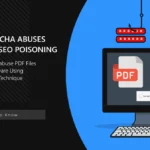A plug-in required to improve the functionality of any web browser is referred as a browser. These browsers come in different versions. The web technologies can be used to author some of the browser extensions like HTML, JavaScript, and CSS. The other modes of development include the machine code and application programming interfaces. They are provided by the web browsers. Some renowned names in this regard are NPAPI and PPAPI. Browser extensions help in changing the interface but at the same time they do not have any impact upon the viewable web page content. One such way to do this is to add a browser toolbar.
The browser extensions can either be paid or free. Although it is convenient to get the free extensions, but at the same time they are not very reliable. Several questions have been raised regarding their reliability. The most significant concern is regarding the security and privacy of the users. Once you get free extension, the extension can get access to all that the user does. It can also inject unnecessary ads to the WebPages or can make background HTTP requests on behalf of the third-party servers.
Free browser extensions are convenient, but not very reliable

The security models of the web browser limit the web pages while the same is not relevant in case of the extension. In this background malicious browser extension can be a real threat for the user. As a result, a malicious browser extension may take action against the interest of the user who installed it. Such kind of this acts more like a malware web.
These free browser extensions are accompanied with a set of bundled programs that are not actually required, but they add to the system without the knowledge of the user. Once installed it becomes difficult to get rid of them too.
In 2012 a malware web was created which that operated with the help of the remote control. It was a great option as a browser extension. The major tasks performed by the said included modifying web pages, hijacking accounts, executing files, and bypassing security features. A similar free web browser was reported in May 2013 that was used to hijack the Facebook profiles through Chrome and Firefox.

Few of the developers of Google Chrome extensions have sold their extensions to some other third-party companies. These third-party companies secretly push unwanted updates that incorporate previously non-existent adware in the extensions. Google removed two extensions from their store in January 2014 because of violation of its own terms of services. Google took the decision of removing their two extension, “Add to Feedly” and “Tweet this Page” when the users reported that these extensions created unwanted pop up ads after these extensions were sold to third-party companies.
About 5% of visits to Google-owned websites were changed by the computer programs which injected their own ads into the pages. About 50,870 Google Chrome extensions and 34,407 programs which injected ads were identified by the researchers. 38% of the extensions and 17% of the programs are said to malicious software while the remaining was potentially unwanted adware.









